Teams Phone User Guide
Collaborate with team members
To support collaboration, all the usual Teams calling features are available on the channel Calls tab. These include:
You’ll also be able to exchange chat messages with internal callers in the call queue window.
Setting Up Your Voicemail Greeting
To set up your voicemail greeting in Teams:
Step 1: Click on your picture in the upper-right corner of the Teams and choose Manage account from the dropdown.
Step 2: Choose the Calls tab on the left of the flyout window.
Step 3: Under the Voicemail heading, click the button titled Configure voicemail.
Step 4: From here, click the button titled Record a greeting.
Step 5: This button will launch a call with the voicemail system where you can use the dial pad to navigate the automated menu and record your voicemail message.
Step 6: Follow the dial pad to change or exit the option after recording the voicemail.
Step 7: Use the following script to record voicemail.
Voicemail Script:
When you are in the office:
Hello. You’ve reached [Name], [Job Title] in [Business Unit] with Toronto and Region Conservation Authority. Please leave your name, telephone number and a short message after the beep, and I’ll return your call at my earliest convenience. Thank you and have a great day.
When you are out-of-office:
Hello. You’ve reached [Name], [Job Title] in [Business Unit] with Toronto and Region Conservation Authority. I’m currently out of the office and will return on [Date]. If your call is urgent please call [Approved Designate] at [Designate’s number]. Otherwise, please leave your name, telephone number and a short message after the beep, and I’ll return your call at my earliest convenience upon my return to the office. Thank you and have a great day.
Not Sure Your Voicemail is Working?
To make sure your calls get to voicemail, change Do Nothing to Voicemail. You can even choose how long you want calls to ring for before being sent there.
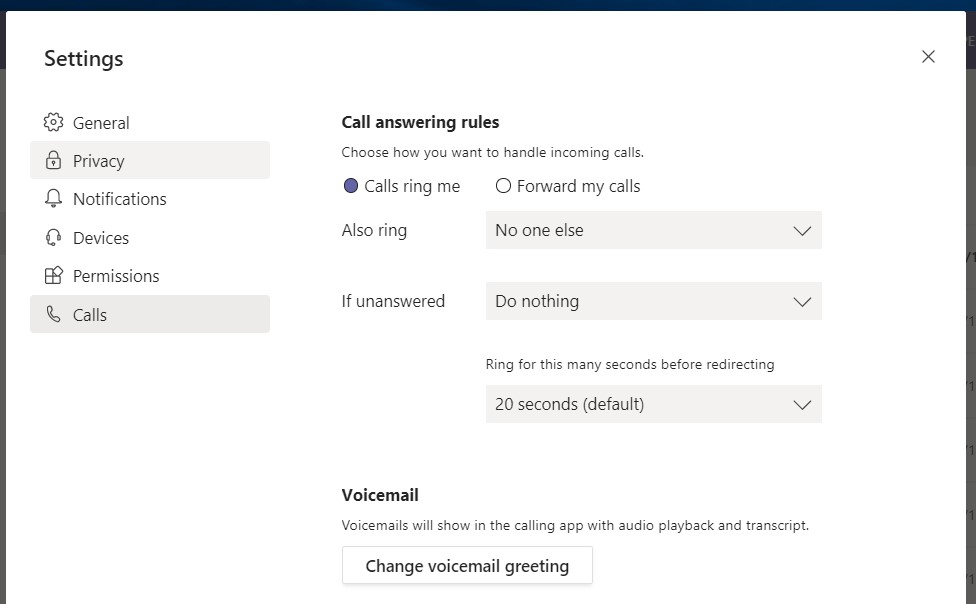
Updating Voicemail Messages
To update your voicemail greetings on Teams:
- Go to Settings > Calls > Configure voicemail.
To update your out of office voicemail on Teams:
- Go to Forwarding > Don’t forward > More settings.
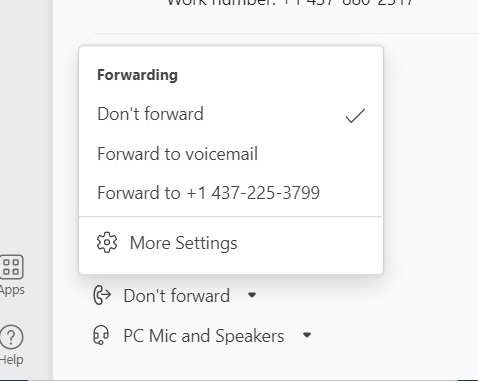
- Go to Configure voicemail > Record a greeting (OR you can type your out of office message in the text-to-speech section) > Select one of the options for when to play your out of office greeting (mandatory).
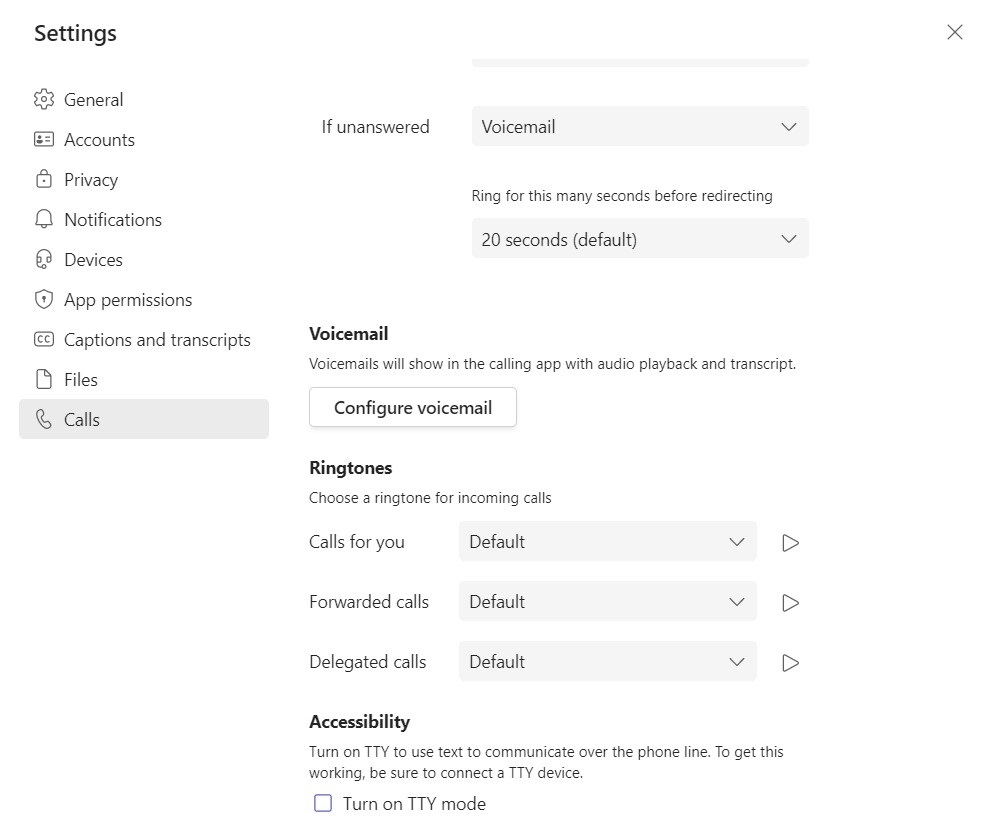
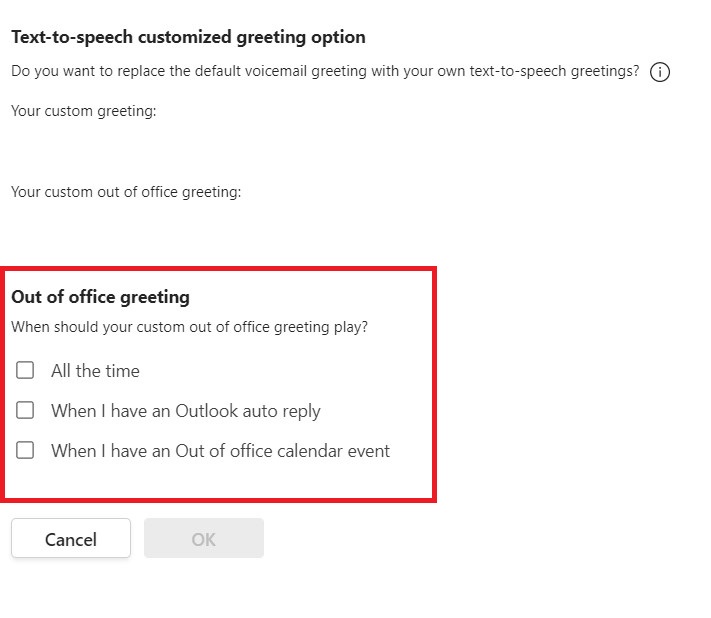
NOTE: In the Microsoft Teams phone system, the DID feature allows users to transfer calls internally without any restrictions. The transferring of external calls option is only available for DID users but not everyone within the system.
Manage Your Support Call Queue in Teams
If you’re a call queue agent and your IT admin has linked your team’s call queue to a channel in Teams, you can view, respond to, and collaborate on support calls directly in Teams.
To view your call queue:
- In the channel, select the Calls tab.
You’ll see your individual agent call queue history and previews of your call queue’s shared transcribed voicemail.
The Agents list in the lower right corner shows you who else is available to take calls.
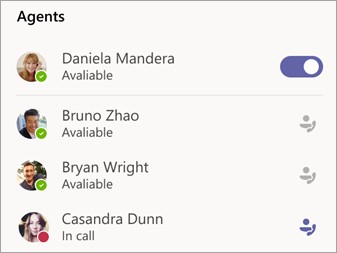
To change your view:
- Switch from your call queue history to the support team’s shared voicemail by selecting the option near the top of the screen.

To return a call:
- Simply point to the call in your queue and select Call.
To change your availability:
You can signal to the other agents when you’re off duty.
- Under Agents, select the toggle next to your name to remove yourself from the list.
NOTE: Currently it may take up to two minutes for the other agents to see the change.
Transferring Calls
Microsoft Teams provides the ability to transfer a call to another user. There are two types of transfers: Transfer (a.k.a. Blind Transfer), and Consultative Transfer.
Transfer (Blind Transfer)
Step 1: To transfer a call, select More options > Transfer in your call controls.
Step 2: Type the name of the person you want to transfer the call to and select them. To finish, select Transfer.
Step 3: Click the drop-down arrow in the Transfer button to see more transfer options.
Step 4: Choose Work to transfer the call to their Teams number, or Work voicemail.
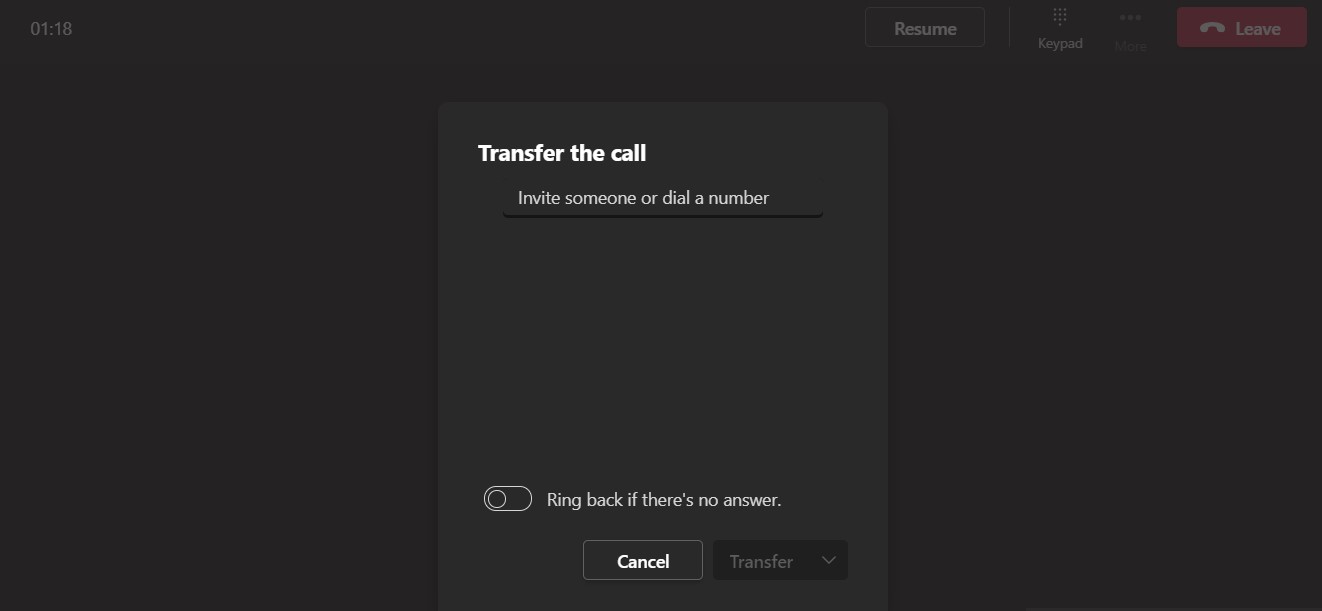
Consultative Transfer
Consultative transfer allows you to consult first with the person you are transferring the call to. This may be done via the phone or using Chat. (Physical phones do not allow chat).
Step 1: To transfer a call, select More options > Transfer in your call controls.
Step 2: Type the name of the person you want to transfer the call to and select them. To finish, select Consult.
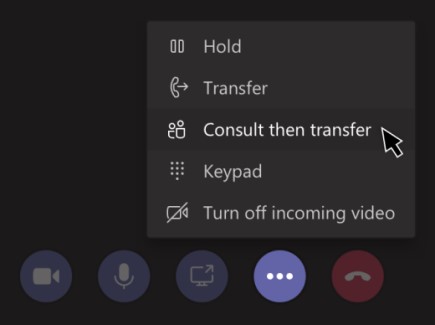
Step 3: Two options for consultation:
- Type a message to the person who you wish to transfer the call to and hit the send button.
Step 4: Click the Telephone button. Once you consult with the person, click Transfer. If the person does not want to talk, choose Stop Consulting.
Step 5: If they wish to send to their voice mail, transfer the call using the Transfer instructions in Step 4, and choose Work Voicemail.
NOTE: In mobile version, the process remains the same, but the interface looks different:
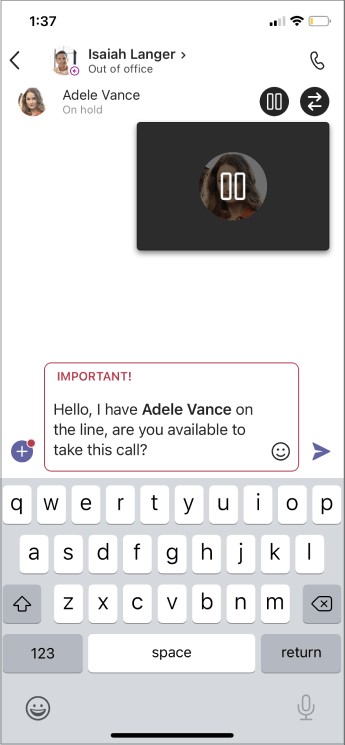
Conferencing in Multiple Callers
Multi-party calling is allowed. A maximum of 50 people can be added to a call.
Step 1: To add someone new to a group call, select the Show Participants icon in your call controls.
Step 2: Type their name or phone number in the search box and hit enter. This will add them into the call.

NOTE: If you’re already on a call, you can answer or start a new call anytime. We’ll place your current call on hold and take you straight to your new conversation.
While a call is on hold, all participants will be notified, and they won’t be able to see or hear you. You’ll see your on-hold calls displayed on the left side of your call window, so you can get back to them anytime.
If you are using Teams in mobile and you’re already on a call, you can answer or start a new call anytime. We’ll place your original call on hold and take you straight to your new call.
Merge a Call
If you’re on a call and want to pull in someone new, merge your current call with a new one.
Step 1: Go to Calls, type a name or number, and select Call. Your first call automatically gets put on hold when you make the second call.
Step 2: After the second call connects, select More actions (•••) > Merge Calls on your call controls.
Step 3: Choose a call to merge with, and then select Merge.
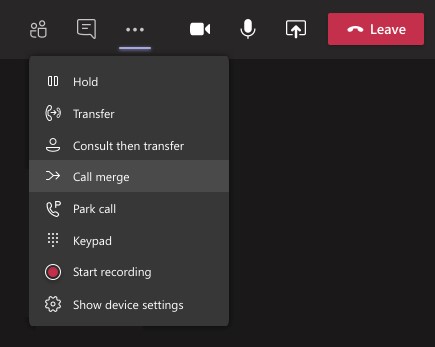
Add a Delegate
Add a delegate to answer or make calls on your behalf in Microsoft Teams.
Step 1: Select your profile photo.
Step 2: Select Manage account > General, and then select delegates.
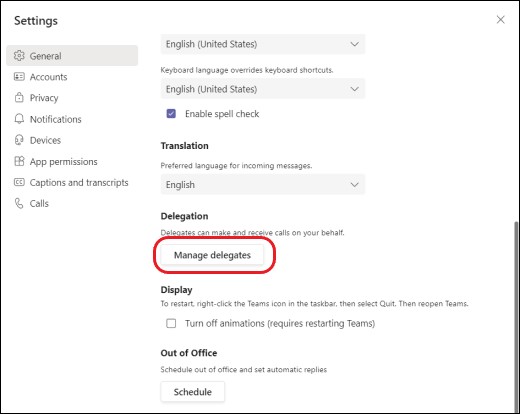
Step 3: Select Your delegates and type the person’s name.
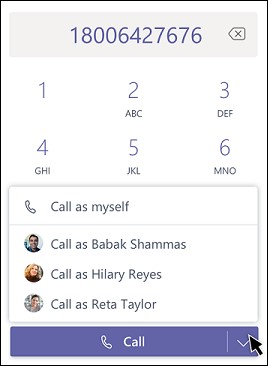
Step 4: Choose which permissions to give them, and then select Add. Your delegate will be notified of their new status.
Step 5: Choose Manage account > General > My delegates to manage your permissions and make sure your calls go to all your delegates.
Keep in mind that any delegator (the person who assigned you as a delegate) can always see the calls you make and receive on their behalf.
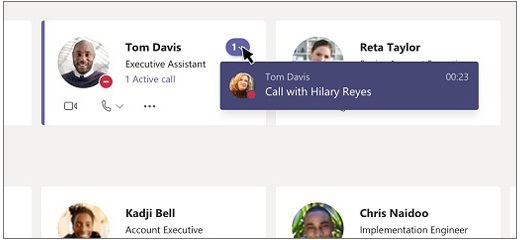
Using Teams Keypad During a Call
Users can access the keypad while calling another organization or person with an auto attendant. To use this feature, you need to bring up the keypad first to dial the selections.
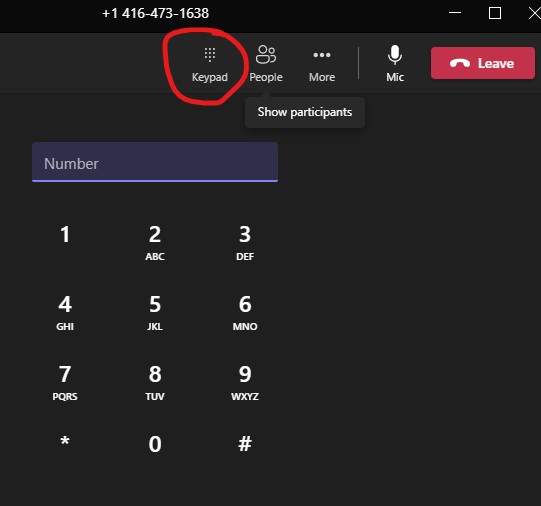
Manage Your Speed Dial Group
Speed dial groups show numbers you can quickly call.
Step 1: Under Speed dial, to add a contact, select the three dots (•••) > Add a contact to this group.
Step 2: Type a name, choose someone, and select Add.
Step 3: Hover over a contact’s speed dial card to start an audio or video call.
Set Up Call Forwarding to a Call Group
Step 1: Under Call answering rules, select Forward my calls.
Step 2: In the Forward to menu, select Call group.
Step 3: Under Add people, add the people you want in your call group. You can add up to 25 people. Anyone you add will get a notification:
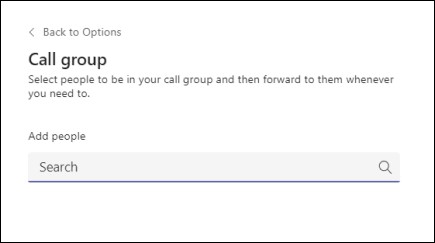
Step 4: Go to the Ring order menu and select All at the same time to ring everyone simultaneously or In the order above to call people in order in 20-second intervals. If your call group has six or more people, incoming calls will ring all of them at the same time.
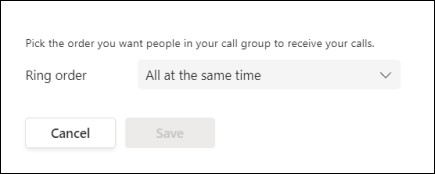
Set Up Simultaneous Ring
If you want your incoming calls to ring you and someone else (such as a delegate) at the same time, you can set that up in Teams.
Select Manage account ••• next to your profile picture at the top of Teams. Then choose Manage account > Calls.
Under Call answering rules, select Calls ring me. Then click Also ring and select where else you want your calls to ring: another person, no one, or a call group.
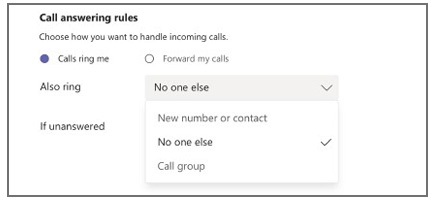
To set up simultaneous ring in a call group:
Step 1: Under Call answering rules, select Calls ring me.
Step 2: In the Also ring menu, select Call group.
Step 3: Under Add people, add the people* you want in your call group. You can add up to 25 people.
*NOTE: You need to add people from your organization. Phone numbers are not supported.
Step 4: Go to the Ring order menu and select All at the same time to ring everyone simultaneously, or In the order above to call people in order in 20-second intervals. If your call group has six or more people, incoming calls will ring all of them at the same time.
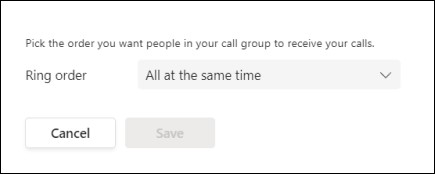
PLEASE NOTE: The Microsoft Teams phone system interface is likely to change frequently and the options may look different from the examples shown above.
How to Use Teams Room Audio Conferencing
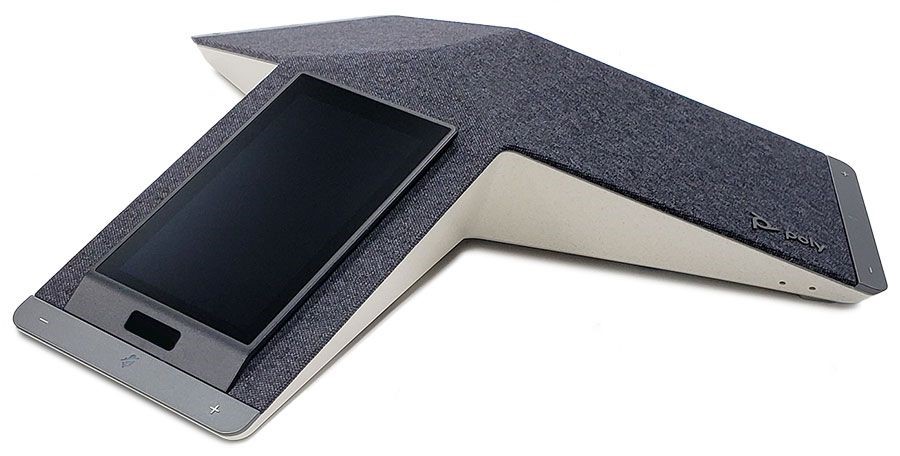
Teams Room audio conference devices (shown above) allow you to make and receive calls while adding the ability to easily host hybrid meetings through Teams (audio only).
The default view (below) shows upcoming meetings with on-screen buttons for Dial Pad, Meet Now, and More options.
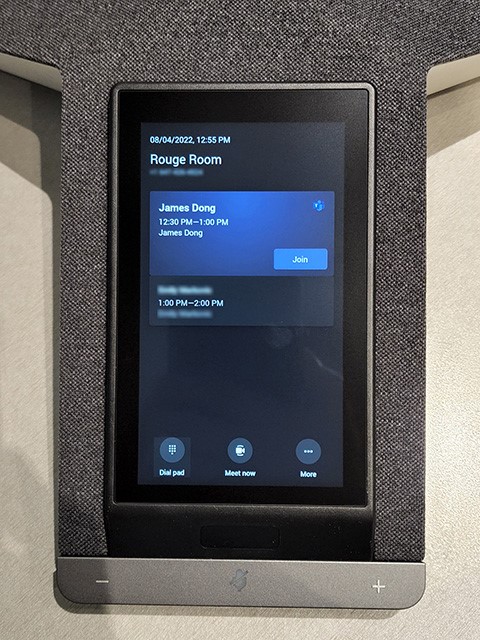
To include the conference device in your Teams Meeting:
Step 1: Book a meeting through Outlook by selecting New Teams Meeting.
Step 2: Add the room as a Location resource.
Step 3: The conference device is now part of the Teams Meeting.